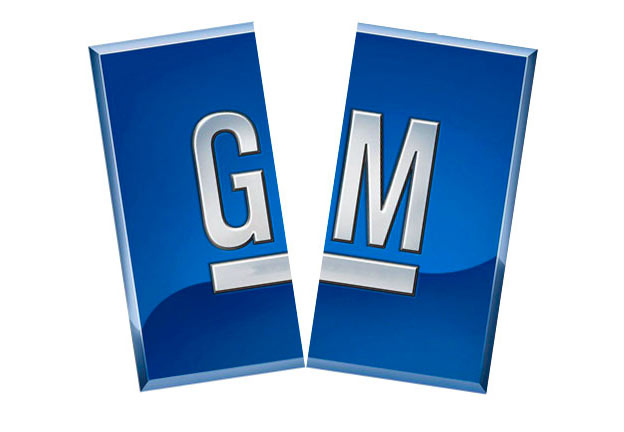Table of Contents
Introduction
General Motors’ decision to discontinue Saab has been a topic of discussion and speculation for over a decade. Recently, Bob Lutz, the former Vice Chairman of GM, shed new light on the factors leading to this decision. His insights provide a deeper understanding of the internal dynamics at GM and the automotive industry’s challenges that contributed to Saab’s demise.
GM’s Acquisition of Saab: The Beginning of the End?
In 2000, GM took full control of Saab, marking a significant turning point for the Swedish automaker. While this acquisition was initially seen as a potential boon for Saab, it soon became apparent that the integration into GM’s vast portfolio was fraught with challenges. Lutz describes the period as one where Saab’s unique identity began to be overshadowed by the broader strategic directions of GM.
Integration and Identity Loss
Under GM’s stewardship, Saab underwent significant changes, many of which diluted the brand’s unique appeal. According to Lutz, efforts to mainstream Saab’s quirky designs to appeal to a broader market consistently failed, leading to stagnating sales and an eroded brand identity. “Every time it was made more mainstream, we didn’t sell any,” Lutz remarked, highlighting the brand’s struggle to resonate with a wider audience while maintaining its distinctive characteristics.
Strategic Misalignments and Market Challenges
The automotive industry in the early 2000s was marked by intense competition and shifting consumer preferences. Saab, known for its innovative and somewhat unconventional vehicles, found it increasingly difficult to compete in a market that favored more mainstream models. Lutz’s commentary suggests that Saab’s positioning within GM’s portfolio was always somewhat precarious, caught between maintaining its niche appeal and adapting to market trends.

The Decision to Discontinue
Lutz reveals that he had advocated for discontinuing Saab for years before the decision was finally made. The brand, he felt, was “off the mainstream” and its appeal was limited to a small, specific market segment. Despite the affection of the automotive press for Saab’s “goofy” designs, the commercial reality was stark—there simply weren’t enough buyers globally to sustain the brand under GM’s business model.
BOB LUTZ: And when it was goofy, which the automotive press loved, there were only 100,000 people in the whole freakin’ world that wanted one.
The Impact of the 2008 Financial Crisis
The global financial crisis of 2008 and the subsequent recession had a profound impact on the automotive industry. GM, in particular, faced severe financial difficulties that led to a government bailout. As part of its restructuring, GM had to make tough decisions about which brands to keep and which to cut. Saab, unfortunately, did not make the cut.
Government Influence and Tough Choices
The bailout conditions imposed by the U.S. government forced GM to focus on profitability and long-term viability. Brands like Buick and GMC were also on the chopping block, but Saab was among the first to be let go. Lutz’s account underscores the harsh realities of these decisions, dictated by financial necessities rather than purely strategic considerations.
Saab’s Bankruptcy and Legacy
In 2011, just a few years after GM’s decision to discontinue Saab, the company declared bankruptcy. The end of Saab was a significant event in the automotive world, marking the demise of a brand cherished for its innovation and distinctiveness. Lutz’s reflections not only illuminate the reasons behind GM’s decision but also paint a picture of an industry at a crossroads, where innovation often clashed with commercial viability.
Reflections on Innovation and Market Dynamics
Lutz’s career, which spanned across all three of the United States’ Big Three automobile manufacturers, was characterized by a commitment to innovation. However, his experiences with Saab highlighted the complexities of balancing innovative design with market demands. His parting thoughts on Saab offer a poignant reminder of the delicate interplay between maintaining a brand’s unique identity and ensuring its financial sustainability.
Abetter understanding of Saab’s history
Bob Lutz’s candid insights into the reasons behind Saab’s exit from GM‘s portfolio provide a compelling narrative of business strategy, market dynamics, and the harsh realities of the automotive industry. As the industry continues to evolve, the story of Saab serves as a cautionary tale about the risks and rewards of maintaining a brand’s unique character in an increasingly competitive market.
Lutz’s reflections not only contribute to a better understanding of Saab’s history but also offer valuable lessons for automotive brands navigating the turbulent waters of the global market today.












El verdadero motivo es que Lutz jamás sintió la más minima empatía, aceptación y tampoco se sintió mínimamente atraído por la marca Saab, su tecnología y forma de entender la fabricación de sus automóviles. Se refiere a ellos como “coches tontos” y todos los demás argumentos que cita carecen de solidez
Saab was very Unique for a reason and none of that should have had to change at the time. I really believe if Saab could have afforded their independence they would still be here. However I see that GM is still making cars that are copies from Saab’s Unique build and Saabs technology, amongst others 🤷♀️
What GM models do you see as copies of Saab today? Curious as to what is the “closest thing” to a Saab in the modern era that way I have a 2nd choice in the event I don’t have another option for a Saab around me.
Hilarious his comments “ because they are not car guys they do not understand the business”, so if you so good why you was in bankruptcy? Why you did not do this job before getting to these point.
Saab had the engineering to apply to other brand and not the other way around, needed to be more what it was not less but with better marketing. He like most GM people never understood what they bought and it shows by his comment.
Amen, brother!
Agree!
Perfectly Put!
Bob Lutz was the main decision maker to drown Saab.
Bob Lutz: the guy who thought he’d know what European consumers would want.
They want Cadillac instead of Saabs 🤣 And then they made BLS in Trollhättan.
Was really popular here in Finland: five cars sold when it came out 😁
I was part of the team which arranged Saabclub Of Finland’s summer event in 2010. I visited couple of dealers in case they’d like to support our club. One of them asked me whether I’d like to take Cadillac BLS commecials and stands with me since the sales had been really poor. Rather not 🤣
It was a boutique brand and perhaps it’s getting more difficult in this world to sustain a brand that has a small following, comparatively. Look how Rolls Royce, Bentley, Ferrari, Lamborghini, Porsche, Jaguar have all been absorbed by conglomerates. Perhaps a different company other than GM could have been a better custodian for SAAB and they still might be around!
A very sad end to a much loved brand and when you consider all that’s been said perhaps it was better to let SAAB go. Now I say that with a very heavy heart and my reasoning is we would have ended up with a more ” watered down “version of SAAB car’s that would not appeal to those who loved the brand.
But it also begs the question why did GM acquire SAAB in the first place if they were looking for more mass sales and more of the same, surely it would have been easier to increase production of the mainstream car’s they were already selling. Some people might say that the company couldn’t make enough profit because of production costs but remember that SAAB were all about safety and this is what was causing the company problems because of the cost to build a very safe car. And of course SAAB didn’t want the GM parts bin as a supply they wanted to use different parts etc , how often do you hear for example people saying the car’s had great seats anyway it’s gone now. BTW does anyone know if the SAAB brand and badge rights were bought by any company/organisation?
If Saab was such a a doomed proposition, why did GM try so hard to make sure it was completely dead? While they were negotiating the disposition of the brand, suppliers were ordered to destroy the tooling for NG 9-5 models, and Victor Mueller’s financial partner in the proposal to take over Saab was arbitrarily ruled “unacceptable” to GM.
The SAAB brand is still owned by the aviation company, and they probably won’t allow any future cars to have that brand.
Yes, Volvo should have bought them.
APC technology is why GM acquired SAAB.
“BTW does anyone know if the SAAB brand and badge rights were bought by any company/organisation?”
SAAB brand and badge rights are owned by SAAB. They have decided not to allow it to be used for cars.
Yes, Saab AB (aircraft) always has owned the rights to the Saab name, the car division was always seen as an off-shoot of first the aircraft division and then the Scania Truck division of Saab-Scania. In 1989 Saab AB granted rights to Saab Automobile AB to use the Saab name, and again in 1995 when Saab and Scania demerged, in 2000 when GM acquired the remaining 50% from Investor AB (who was majority owner of Saab AB) and finally in 2010 with the Spyker acquisition. Saab AB said no in 2014 to NEVS, after the last batch of 9-3N Aeros were made. For the Griffin logo, that requires agreement from Saab AB, Scania and Skane IIRC.
GM bought Saab for their turbocharger technology. Same as Ford buying Volvo. The rest of Saab was worthless to GM.
GM brought for their technology and kicked them to the curb
Saab were terrible financiers, look at how much they spent re engineering everything that GM sent them.
I love & miss Saab but they were their own worst enemy
To Paul Smythe >
Do your homework better next time.
To Jonas Nordstrom >
I’ve done mine, that’s why I can accept that Saab aren’t here today.
They sucked at running a business & kept over spending when they had nothing.
If you can’t accept it that your issue
To Paul Smythe >
The MOST missing brand today, in case you have missed that?!
The cars/inventions was on top in every aspect
but the board was crap, is another thing.
You`re not even close to the vicinity of what Saab stod for
living on the other side of the Atlantic.
So whom of the engineers have you consulted for
making your statement?
I would bet the threat Saab was to Cadillac was also a factor. Need to get rid of competition for the upcoming ATS release back in the day.
Saab was one of many brands stuffed up by GM. They bought Holden in Australia and closed it down. They bought Opel and then sold it. They tried to ram the Chev badge down South Africans throats and that failed. They closed ops in SA. They basically abandoned all Humner, Caddy and Saab customers in SA.
Saab would have died in the 90s if it wasn’t for GM
TO Samuel Sabo >
Not Really there’s more Rich People in the world than poor people in the world I own a 2011 Saab 93 convertible turbo 4 I brought it brand new and I still have it and it only has 49100 miles on it and if SAAB stays in business I would brought another one too.
TO Samuel Merritt >
it’s not about the number of rich people, Saab was bleeding money and most rich People went for other Euro brands, I love Saab but what I said is the truth
Lutz was no genius. Just another corporate failure at GM.
Lutz was so great. Really, there’s nothing wrong with GM.
Love how he left out how GM raided SAAB’s security and safety technology.
When GM goes bankrupt I will open a magnum of the best Champagne!!!
However, he did not answer some (to me) essential questions. Why did GM shut down Saab right before production of the new 95 model began. Why did they put so much energy into preventing a takeover of the company? And (correct me if I’m wrong) why did the banks suddenly demand early repayment of loans from Spyker, which took over Saab? Indeed, there was a suspicion that this decision of the banks was influenced by GM. What pushed Spyker into bankruptcy. Which the Americans even wanted to buy after bankruptcy. But unsuccessfully.
I am a Saab tragic, but the first to admit
1. They made cars that no one wanted to buy (the world simply didn’t give a shit that Saabs were over engineered.) I love the fact they are over engineered!!
2. Unlike Volvo, who made the XC90 (which along with ford, saved them) Saab had no interest in building a SUV – that’s why it got shoehorned with the 9-7x, etc
3. No one in the world respected the underlying platforms that GM Saabs were based on (including Saab themselves). GM Europe cars were shit, never class leading, nicest thing u can say about them was that they were cheap and cheerful. But Saabs were always the butt of the joke “it’s an overpriced vectra”
4. Too late on automotive trends and overpriced. I love the black bumper rubber strips and black door handles, but every other car at that price point, everything was color coded. In Australia (were I live) a 9-5 aero wagon was 90k and you couldn’t even get it with sat nav???
5. You can’t be a small volume car manufacturer in a first world country unless you’re selling cars over 250k – the numbers simply don’t stack up. 8 million people in Sweden back in the day, high wages, small volumes and could never crack the premium luxury market like Audi, Volvo or BMW could.
6. Finally, GM was the wrong suitor. It’s apparent now, but Saab really had no options. GM’s culture and Saabs culture were like chalk and cheese.
TO Reif Hand
Interesting but in #2 you state that Saab was not interested in the SUV-segment. The truth is that around 2005 Saab had designed a 9-3 SUV close to production suitable also for Europe. But Bob Lutz told us that we had designed a car in a non existing segment so he killed it! 🥲
After that BMW X1/3, Audi Q3, Volvo XC60 etc sold millions of smaller SUVs.
Saab could have led that new SUV-segment so big mistake by Lutz.
TO Göran Kähler
let me re-phase then, Saab wasn’t interested until it was too late. The x5 was released in 2001, the xc90 2003.
By 2005, the 9-5 was already 8 years old. The 9-3 was 2 years old, convertible released and wagon imminent releasing.
Sadly it was too little, too late.
TO Reif Hand
I don’t think Saab weren’t interrested. They weren’t given resources. Their cars didn’t sell as poorly as people make it out. They just didn’t have a sufficient model range, so the combined sales were low. GM should’ve aggressively expanded the range in the 90’s. Given them money to launch compacts, sports cars, MPVs and more. To, like Toyota did with Lexus, allow the brand to lose money to grow.
A huge issue is that Saab were FWD-only until 2008. Premium cars aren’t FWD. And Saab had 4WD test mules as early as 1985.
The problem was GM did not understand SAAB as a brand. You can not rebadge Vectra and try to sell it on BMW or Audi price. I dont understand why they bought saab in the first place. I loved saab features like Night panel, key position, safety. They should work on that not on turning Saab to conventional vehicle. If that i would want i would buy Opel in the first place. Saab was never meant to be mainstream.
The GFC was the end of GM. The federal funding to refloat General Motors Corporation required rationalisation, so Pontiac, Hummer, Saturn and Saab were all let go! Later on they sold Opel to PSA, closed all RHD markets, including Holden, Daewoo!
GM tried to make a niche brand for car lovers a generic one size fits all GM subbrand. SAAB would have survived under the umbrella of BMW. BMW did a remarkable job with MINI. SAAB 9-3 on the BWM 3 platform. Not cannibalizing on MINI or BMW buyers at all.